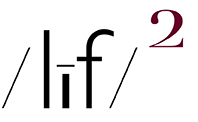all photos (embiggenable)
SO, IT APPEARS THAT M. JOHNSTON WILL BE writing about “film photography”, over time with multiple installments. As far as my visits to TOP go, it will just be more stuff that I barely glance at-way too much O(ff)T(opic) as it already is.
But, then again, I never really considered TOP to be a site about photography. That is, about the medium itself and its and apparatus (practices, conventions, aka: the functional processes by means of which a systematized activity is carried out ). And FYI, to be clear, I do not consider entries about gear-cameras, lenses, computers, and other hardware-to be about photography. That’s cuz I’m sorta like Paul Strand, who, when asked about the importance / significance of his work, answered:
“My real answer would be, the answer is on the wall.”
In other words, it is all about the photographs, aka: picture(s). It is not about how the picture was made or what gear was used to make it; that’s all just “serious” amateur hobbyist claptrap. And, to sound a bit snarky, photographs are in very short supply on TOP.
But I digress; if M. Johnston is serious about reaching the “youngsters” who are messing around with making images on film, he’s not gonna make it unless he stops writing and starts talking. Ya know, Vlogging, cuz the photo pipsqueaks out there, according to those in the know, do not read anymore.
That written, I also question the idea of how much-aside from nostalgia-is there out there to be written about the making of photographs with the use of film. I ask that question even though I come from over 40 years of making photographs (with the use of film) and making color and BW prints (in the wet darkroom). And, it’s also worth noting that, to this very day, I continue to believe that the pinnacle of color print making is a C print made from an 8x10 color negative; I made plenty of those and I can identify such a print from a mile away.
And while I’m at it, let me pick another nit; I do not believe that there is such a thing as “film photography”. That’s cuz, in my mind and to my way of thinking, there is only photography, aka: the act of making a photograph. Simply put for simple minds, one may make a photograph using any kind of equipment or light sensitive receptor but the end result is still, simply stated, a photograph….like, ya know, I do not make iPhone photographs; I do make photographs using an iPhone but, that written, the result is a photograph.
All of that written, I wish M. Johnston well in his “film photography” blogging endeavor.
BONUS PICTURE FROM LAST EVENING
(enbiggenable)
My iPhone was turned off, sitting on the arm of my Westport Adirondack chair; I picked it up, hit the Camera Control button, which instantly turned on the camera app, and the I hit the button again-click (shutter release noise)…. and there you have it. Maybe 3 seconds from start to finish. Amazing. Apple got that control right.
FYI, no flash, just my porch light.




